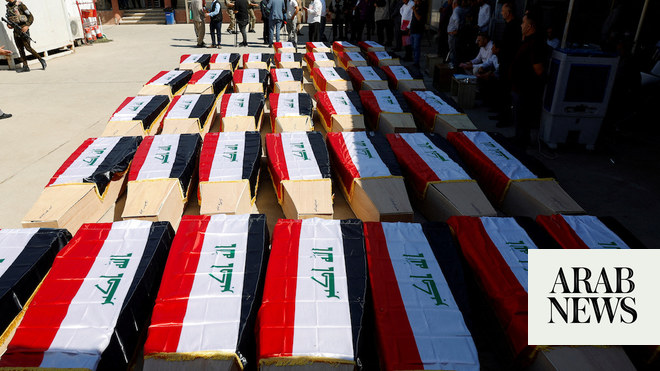
Deliveries did little to satisfy people living in the rubble of Mosul’s Old City during Eid
Many of the Old City’s narrow streets remain inundated by wreckage left by the air strikes
MOSUL: On a scorching August afternoon, an angry crowd besieged a mini-truck loaded with meat of two slaughtered cows amidst the ruins of what was the last Daesh bastion in Mosul.
In a desperate scramble, they grabbed beef from a man standing in the open back of the truck and, after it pulled away, some stayed on to descend on the next one to arrive.
Part of an annual ritual of Eid Al-Adha celebrations, the deliveries did little to satisfy people living in the rubble of Mosul’s Old City more than a year after Daesh was ousted in a final battle reduced many inhabitants to homeless beggars.
“There are many residents who need aid in getting food and rebuilding their houses,” 24-year-old Ali Sharif said after taking a plastic bag with meat from one of the cars. “Everyone here was affected by war.”
Since Iraqi forces celebrated victory over Daesh, life for the inhabitants of ancient west Mosul, some of whom welcomed Daesh’s arrival in 2014, has hardly improved. That has left them no happier with the Shiite-led government in Baghdad they long accused of treating them like second-class citizens.
“We will give this to the poor people here to help them and we ask God to bless us. Our government doesn’t do anything (to help them),” Ali Aga, a local logistics specialist, said as he headed into a labyrinth of alleyways in Mosul’s ancient Old City to knock on doors and hand over packets of fresh beef.
Many of the Old City’s narrow streets remain inundated by wreckage left by the air strikes of US-led coalition forces that helped Iraqi government forces drive out Daesh after nine months of devastating urban warfare.
The remains of some walls look like they are about to collapse. Decayed body parts can still be seen, and smelled, amidst the debris where the most severe fighting raged west of the River Tigris.












